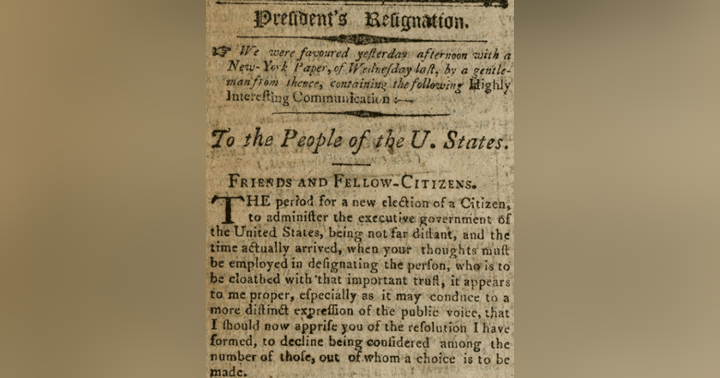The Enslaved Community at Mount Vernon

Check out Mount Vernon’s free online resources about Ona Judge, Hercules Posey, and the Enslaved Community at Mount Vernon. For a full bibliography of the episode, including primary sources and scholarship, check out our Episode 7 show notes.
Media and Interactives
Lives Bound Together – Virtual Exhibit and Webpages
Lives Bound Together is an interactive, virtual exhibit that tells the stories of the people who were enslaved at George Washington's Mount Vernon. It covers extensive information, from global trade to daily life on Washington's five farms, living conditions, freed communities, and more.
Ona Judge
Ona Judge was an enslaved seamstress at Mount Vernon. She was forced to travel to and from the Presidential house in Philadelphia and eventually gained her freedom by journeying to New Hampshire in 1796. Ona remained free for the rest of her life, despite Washington's attempts to bring her back into enslavement. Learn more about her life, experiences, and resistance.
Hercules Posey
Hercules Posey (1747?-1812) was an enslaved cook for George Washington during the 1780s and 90s. A renowned chef during his lifetime, Hercules self-emancipated from Mount Vernon in 1797. Learn more from the Digital Encyclopedia of George Washington.
A Day in the Life of an Enslaved Cook
This is a conjectural timeline based on 18th-century documentation about what a day might have looked like for Hercules Posey, Doll, Nathan, Lucy, or the other enslaved cooks at Mount Vernon.
Slavery at Mount Vernon, 1799 (Infographic)
An infograph created by the staff at the Washington Library that visually represents information from George Washington's List of Enslaved People, 1799.
Lesson Plans
Be an Archaeologist
This activity sheet focuses students' attention on historical artifacts in the Archaeology collection to learn more about the enslaved population's lives at Mount Vernon. Students will learn how to use artifacts as a primary source, which is especially important in such cases where artifacts are some of the only primary sources left from enslaved communities.
George Washington’s List of Enslaved People
A lesson that uses George Washington’s list of enslaved people from 1799 to understand enslavement at Mount Vernon. Students will explore information related to the institution of slavery in the 18th century.
George Washington’s Views on Slavery
A lesson that asks students to examine document-based evidence related to George Washington and slavery. Students are asked to use evidence to write an essay that answers the essential question: What were George Washington’s views on slavery?
Life After Slavery
This activity sheet is designed to get students to look closely at a primary source document so that they can extract and analyze the information with in it. Students will use the source to learn about what happened to the enslaved people at Mount Vernon after George Washington's death.
The Slave Quarters at Mount Vernon
This activity uses the Slave Quarters at Mount Vernon to better understand the lives of the enslaved population who lived and worked on Mansion House Farm. Students will learn how to use place to examine American values and culture in the late 18th century.
Snuff Box and Hogshead
This activity compares two containers of tobacco- one on the production side and the other on the consumption side to show how tobacco was made and sold in the Colonies and in England. Students will analyze a snuff box and hogshead as well as British advertisements for tobacco and snuff to understand the importance of tobacco to the 18th century. It also shines a light on how slavery was the foundation of Colonial and English economy, government, and lifestyle.
Which Grace? Analysis of Historical Resources
A lesson challenging students to analyze primary and secondary sources to answer the question How many enslaved individuals named Grace, Isaac, and Suckey were there at Mount Vernon from 1750-1799? Using information available to researchers and scholars at the Washington Library, students become historians as they work to answer a question that has no definitive answer. As an optional extension, students can create a biography about one of the individuals identified in their research.
Taking Agency
In this post- distance learning program activity, students will use primary source objects, places, and documents to investigate different ways members of the enslaved community took agency over their lives while living in bondage. Students will learn about enslaved life at Mount Vernon, explore multiple perspectives, and contextualize history within a larger narrative.
Primary Sources
Slavery Primary Sources
A full list of the primary sources related to slavery and the lives of the enslaved community in the eighteenth century, available from Mount Vernon.
Fugitive Slave Act
A transcription of "An Act respecting fugitives from justice, and persons escaping from the service of their masters" from 1793.
Slave Trade Act of 1794
A full transcription of the Slave Trade Act of 1794.
George Washington’s Last Will and Testament
A full transcription of Washington's will.











